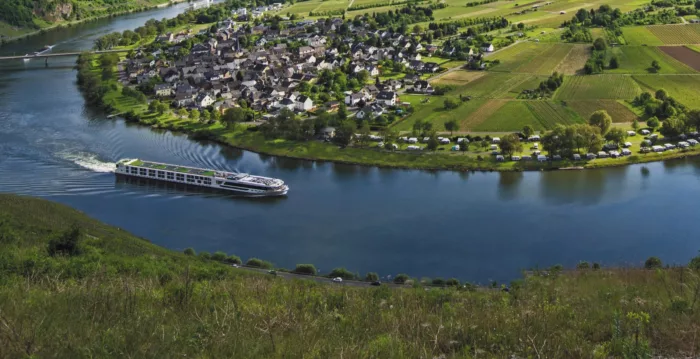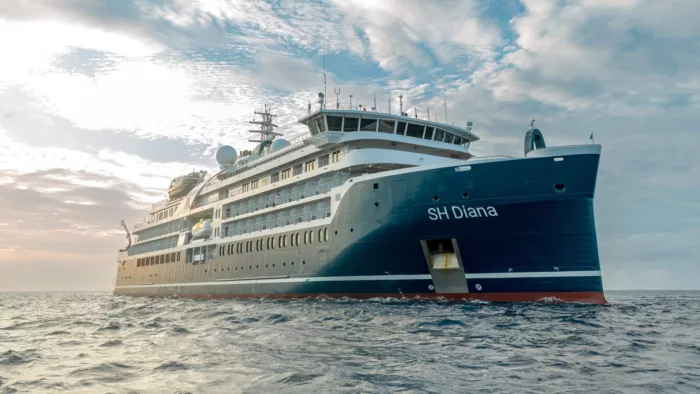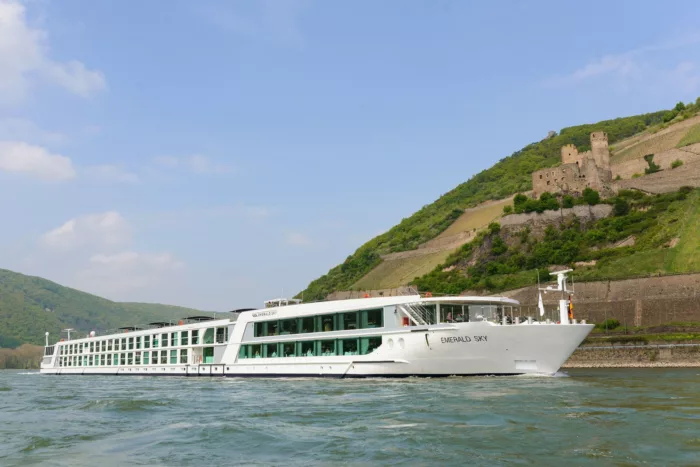
RNLI at 200 – The Land Rover: An unsung hero
As a seasoned Land Rover enthusiast, our SEO boffin Calum Brown aided promotion of the RNLI’s dedicated LR fundraising event in Poole, Dorset. Problem was, our chap had to get his old Land Rover there – from Scotland – first...
Britain remains a powerhouse for iconic pairings – Morecambe and Wise, fish and chips, Liz Truss and lettuce – that capture the essence of history.
Some argue good ol’ Albion is best symbolised by tea and crumpets, or golf and tartan. Others proclaim that British Airways and Concorde, or Cunard and RMS Queen Mary, epitomise the sterling British mantra. Then there’s the Royal family and all their velvety scandals. Guffaw.
However, the UK boasts an intimate pairing that goes beyond entertainment or global one-upmanship. A timely collaboration that does more than aid the treasury or enhance a profitable stereotype. And you can find this iconic alliance on almost every stretch of Britain’s coastline.
The efficient yet romantic partnership between the Royal National Lifeboat Institution (RNLI) and the Land Rover Defender pushes forth without seeking witness or reward, playing a critical role in providing both the cruise industry – and our country – with the ultimate safety net.
More RNLI goodness
This institution holds importance for travel operators hugging Britain's coastline, too, providing expert sea rescue services, and ensuring passenger safety in emergencies; from transporting stroke victims to hospital, and searching for those who have somehow ended up missing overboard, to aiding crew members with medical conditions. Regardless of whether you are docked in port, or operating 100 miles from shore, you can count on the RNLI for help.
Of course, it would be easy to assume that, in our modern times, such protection would no longer be required. Surely, this is a Victorian service in our digital age? Yet, even for the most prudent cruise line, coastal environments remain largely unpredictable. No amount of contemporary technology can fully protect you from the elements or a person's unique predicament.

The RNLI and modern cruising
While modern ships are equipped with state-of-the-art safety features, the RNLI's specialised knowledge and rapid response capabilities offer an essential layer of protection against the unforeseen. Fred Olsen is proud to be the longest-running commercial partner for the Royal National Lifeboat Institution. They know a good thing when they see it.
There's also an importance here that goes far beyond everyday rescue missions. The RNLI's deep understanding of coastal conditions and commitment to safety standards has shaped protocols that influence today's cruise operations. You may not feel the Institution's presence while dining on 5-star cuisine within view of His Majesty's coastline, but they are very much there upon the horizon. On standby. Ready and waiting should the worst occur.
By spearheading a movement in safety education and drills, RNLI crews help maintain a culture of preparedness. This partnership ensures that passengers enjoy peace of mind while traveling, knowing there's a dedicated organisation safeguarding their journey. And, behind all of these operations, there's typically a Land Rover at work.

Of course, Land Rover’s association with the RNLI feels relatively young considering the institutions’ origin. March 2024 marked the RNLI’s 200th anniversary, whereas Land-Rover first emerged following the post-war export demand of April 1948. Even then, it took until 1960 for the two to combine for full-blown rescue operations and emergency flood response.
Throughout those subsequent decades, the partnership morphed into one of Britain’s most celebrated. So much so that, with a year of anniversary events, the flagship station in Poole held a dedicated celebration of Land Rover vehicles on Sunday, April 7.
Catching wind of the event through the Land Rover community, it would have been rude not to spread the word and gain an inside look at the RNLI in action. There was a problem, though. I had to get myself down to Poole from Edinburgh, in my own ex-military 1977 Land Rover 88” – where the heater is largely aspirational and long journeys defy most UN torture legislation. And that's only if the age-old engine clattered into life without bursting into a mushroom cloud.

RNLI and Land Rover: An iconic British partnership
Land-Rovers quickly became essential tools for RNLI survival in areas where direct access to the water was challenging. The vehicular adoption provided rescue crews with greater flexibility and efficiency in responding to emergencies along tough areas of coastline. Where other vehicles failed, the Land-Rover proceeded with steely determination and the pluck of a steroid-fed mountain goat. While also towing a Class-D lifeboat, backwards, and in heels.
It therefore comes as no surprise that RNLI teams cherish their Land Rovers. When the going gets tough, their dark-blue 4x4 becomes more than just a tool or a vehicle. It’s a living, breathing member of the crew. One that charges into the worst weather imaginable as a sturdy guardian; shielding RNLI volunteers from nature’s brutal elements.
When raven-black skies usher gale-force winds that tear at your every breath, when every second counts and lives hang in the balance, when mindset becomes your greatest asset or biggest obstacle; no other vehicle offers such inexorable support as a safe haven.
No other off-road vehicle can traverse the treacherous ascents and topography of our coastline, before wading through deep water and tackling rugged landscapes while safeguarding crew and equipment. And then go out and undertake that operation again only a matter of hours later without question.

For those within the RNLI, the Land Rover Defender transcends status as a mere vehicle, acting as a lifeline and - dare we say - friend. Their four-wheeled mate remains ever present outside of the emergency arena, attending marriage ceremonies when crew members tie-the-knot and social events in the name of fundraising.
As a symbol of endeavours, station Land Rovers typically lead funeral processions when loyal RNLI team members are struck down, such as the recent service for 26-year-old Josh Willder.
Society often forgets that, in their mission to save lives, RNLI volunteers often need protection themselves, and the Land Rover is their last line of defence. A steadfast force, akin to a matron in a storm-battered hospital – fearless, resolute, and bringing calm where there is chaos, ensuring the volunteers can press on.
Just as the RNLI brings hope to those lost at sea, the Land Rover stands as the unswerving protector of those who rescue. That sentiment shines through when you talk to those who man our nation’s lifeboat stations. Should a Land Rover have been lost while on manoeuvres, or succumb to terminal rust, common practice revolves around a shrine-like corner of the station where a picture of their missing comrade remains affixed to the wall.

Getting there: Calum's SEO Land Rover
The Land Rover marque doesn’t enjoy the most profound reputation for on-road reliability. However, when operating out in the wild, the Defender cannot be beaten.
The same applies to the Defender’s predecessors – the Series I (1948-1958), Series II/IIA (1958-1971), Series III (1971-1985), and 90/110 (1985-1990). The vehicle's provenience with mountain rescue groups, the UN, the Red Cross, and dozens of military powers attests to that.
My 1977 Land Rover, affectionally known as ‘Sgt. Godfrey’, has been with me for over a decade. Rescued from a scrapyard and bearing more scars than Edward Scissorhands following a bout of hives, with a cruising speed preferred by most cyclists and the same refinement as a Monk’s bedchamber, doing more than an hour behind the wheel would keep an osteopath in work for weeks.
The open road with Godfrey brings all the purification of a demonic cutlery tray, yet offers a vagabond charm beyond words. Godfrey means more than transport; he's an extension of myself.
As you rumble forth, each twist of the ignition brings a palpable sense of suspense; will today be the day he doesn’t start? Or perhaps the day he starts but decides halfway towards the destination that maybe, actually, he’s done for now?

As it turns out, Godfrey didn’t even want to leave his shed. It was therefore time to beg and plead for, and then steal, my father’s far-newer 2012 Land Rover Defender. His girly version offered comfortable seats and power steering, rather than my usual soundtrack of metal against metal, occasionally punctuated by expletives and hasty prayers. No gentle thwack of a loose dashboard dial here. It was all rather posh. It even had a radio.
The Defender’s DNA still provided a clutch set in concrete, however, alongside the commonplace metallic-bouncy-castle ride comfort. Yet the journey proved trouble-free. All 437 miles of it.
Rolling up to a warm and appreciative RNLI welcome made the previous eight-hour drive worth every ankle-crushing gear change. Although we were all mostly strangers, the reception was more of a family reunion. The RNLI hospitality left me feeling as though I'd known these people all my life. They appreciated all efforts and distance, swarming around each new arrival with profound eagerness. Conversations swarmed as the crowd infiltrated Poole.
Is this a Series III County? Are those tyres the 750R?
A TDV8! Are those outriggers original?
Did you rebuild the gearbox yourself?

An RNLI love affair
As scores of Land Rover vehicles descended upon the RNLI’s celebratory showcase, the air sparked with enthusiasm.
Through Poole’s crisp sea-breeze, the ooze of burbling V8s, sprightly 2.25-litre petrol four-pots, and throaty TD5 turbo diesel provided the basis of laughter and camaraderie. The affection that RNLI volunteers displayed for their vehicles was tangible enough to jump from person to person.
Each Land Rover on display was responsible for someone, somewhere, continuing to thrive. A life saved through the unique teamwork between man and machine. And this was the time to acknowledge the Defender’s contribution to a national treasure – our beloved RNLI.
Naturally, the RNLI is – simply – an abbreviation for the collective efforts of the brave and the mighty. Crews are not always paid for their efforts, and public donations are mostly spent on safety gear, machinery, and the lifeboats themselves.
It’s these volunteers who craft the continued reputation for RNLI ventures, and a huge number of these heroes were present, bringing with them their own personal Land Rovers. All of which were a part of the family.

One of the individuals we spoke to doesn’t like the term ‘hero’, however. Maximillian Crews-Underhill explained that “no hero status is required. We are just happy to help”.
“My involvement with the RNLI started seven years ago. I grew up in Devon and watched the Torbay lifeboat go out. At the same time, my Dad owned a classic Range Rover. I can still remember it in the beautiful blue
"I’m a crew member at Poole lifeboat station and I’ve had my Land Rover for 20 years. It was on my first date, it was my wedding car and been there at every major event.”
He laughed as he explained that his Land Rover 90 was enjoying its’ own commemoration in being present that day, yet stressed the importance of what the RNLI’s 200th anniversary really meant.
“It’s really important to remember all those who have strived and suffered in the sea before me. I’m really proud to be an RNLI volunteer.
"It was a longterm childhood ambition alongside having my own Land Rover. With the RNLI using Land Rovers throughout their history, it’s the perfect partnership.”

These words stuck with me, as I ate the Land-Rover-shaped biscuits and spoke with countless enthusiasts. Another humbly eloquent soul, Charlie Fitzgerald, told me: “We’re all a bit weird in the head, to be honest with you. Give me a Force 6 with an 8-foot swell and I’ll be far happier than sat at a desk”.
This same mantra can be achieved by driving a Series IIA 88” towards the national speed limit, which is why Charlie feels so at home behind the wheel: "Fingers crossed that we can make it [the event] a yearly thing, given how well today has gone”.
That attitude was also shared by Ollie Waring, the RNLI’s mastermind behind April’s Land Rover event. “I’m sure we can make it an annual turnout. Larger car park next time! We didn’t know what to expect, but we were only a few cars away from sweating it a bit.”
As attested to by those in attendance, the enduring partnership has seen the Land Rover become a symbol of reliability and endurance in the most challenging conditions.
From their early days as a clean utilitarian design to the modern, highly-customised Land Rover Defenders still used and restored today, these vehicles have remained central to the RNLI’s ability to respond quickly and with purpose, making sure every volunteer can reach those in peril, no matter where the call for help comes from.
Here's to next year. My own Land Rover will be there. I promise.






















